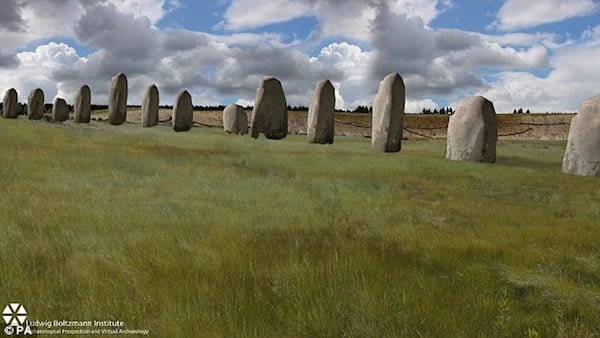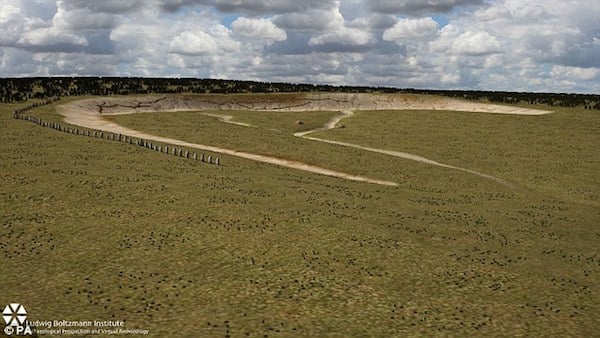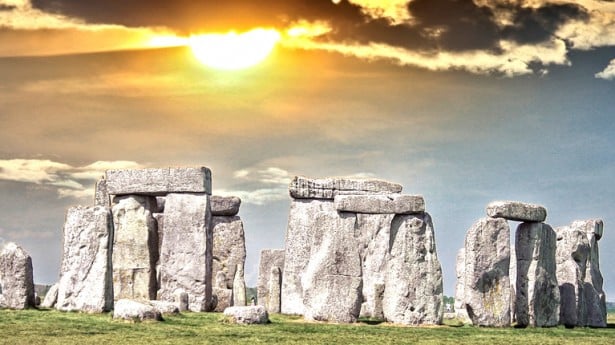Art World
Super New Stonehenge Discovered: Immense 4,500-Year-Old Monument Found Buried Next To Stonehenge
Stonehenge II has been described by experts as "archaeology on steroids."

Stonehenge II has been described by experts as "archaeology on steroids."

Lorena Muñoz-Alonso

As if Stonehenge wasn’t impressive and mystifying enough, scientists have now discovered another massive Neolithic monument just one mile away from it.
“Stonehenge II,” as it has been dubbed by the Daily Mail, was found buried 3 feet underground. The huge 4,500-year-old monument is formed by over 90 stones arranged in a straight line.
“We’re looking at one of the largest stone monuments in Europe and it has been under our noses for something like 4,000 years,” the archaeologist Vince Gaffney, who leads the Stonehenge Hidden Landscape Project, told the Daily Mail. “It’s truly remarkable.”
“We presume it to be a ritual arena of some sort,” Gafnney added. “These things are theatrical… Designed to impress.”

An artist impression of the newly discovered Durrington Walls henge. Image courtesy of the Ludwig Boltzmann Institute.
Using state of the art radar technology, experts have found about 30 intact stones of about 4.5 meter tall. The fragments of 60 more buried stones, or perhaps the foundation pits on which they were installed, have also been discovered.
The stones had been found underneath the south-eastern edge of what subsequently became Durrington Walls: a Neolithic circular settlement thought to have housed some 4,000 people and—at roughly 12 times the size of Stonehenge itself—thought to be Britain’s largest prehistoric henge.
“What we are starting to see is the largest surviving stone monument, preserved underneath a bank, that has ever been discovered in Britain and possibly in Europe,” Gaffney told the Guardian. “This is archaeology on steroids.”

Stonehenge.
The stones have not yet been excavated, but Gaffney said they are thought to be sarsen—large sandstone blocks like the ones used at the neighboring Stonehenge.
Whether the recently discovered monument might have been a rival destination to Stonehenge or part of the same sacred complex remains to be studied, although Gaffney appeared skeptical about a possible link between the two. Like Stonehenge, the much larger Durrington Walls was built to align with the solstice.
The discovery, which was presented at the British Science Festival—currently taking place at the University of Bradford, where Gaffney is a Professor—comes a year after an intense period of revelations that are changing our understanding of the legendary pre-historic monument, which for many years had been thought to stand alone.
In September of last year, the Stonehenge Hidden Landscape Project revealed that a massive religious monument made of 60 stones had been discovered two miles northeast from the famous site.
Click below to see a video with a visualization of the newly discovered Durrington Walls henge: